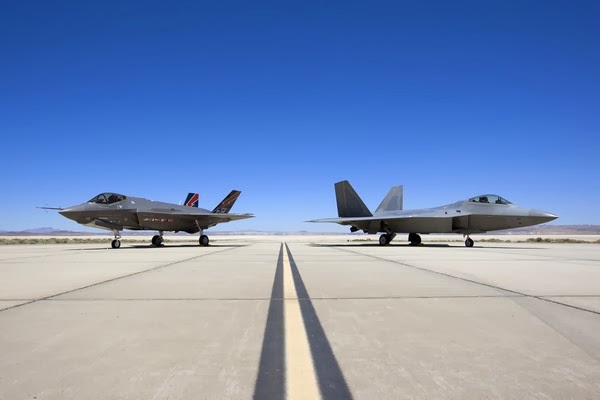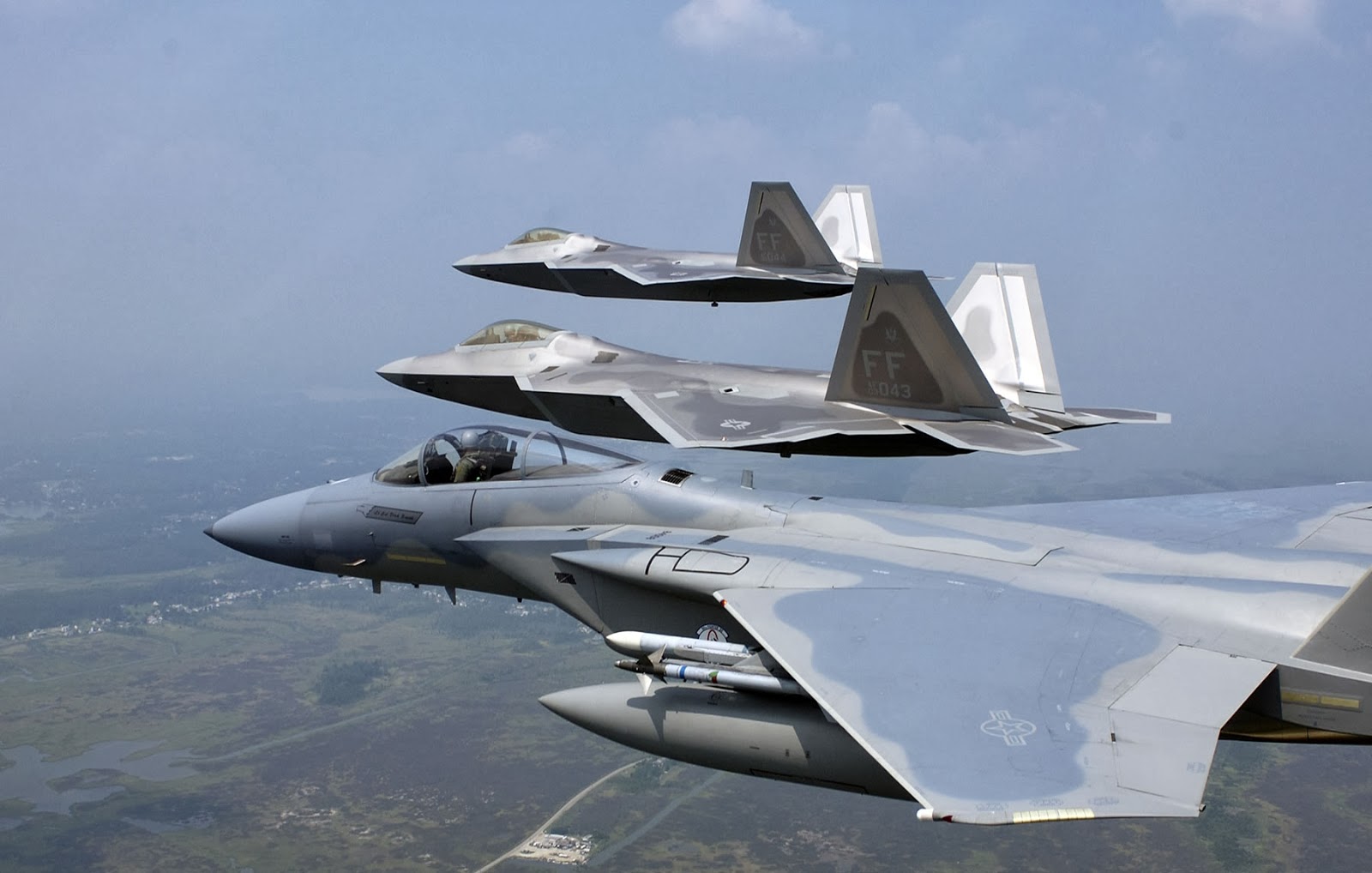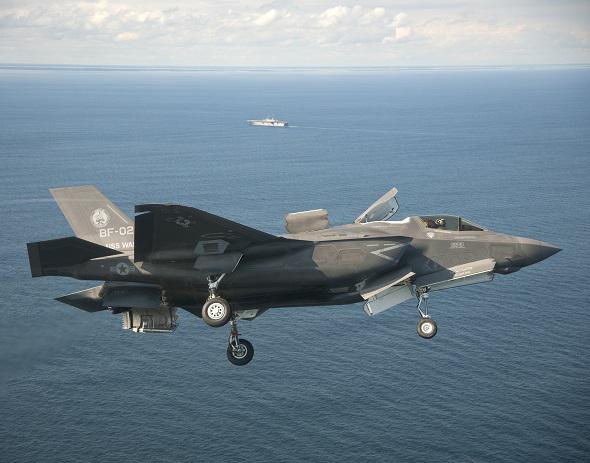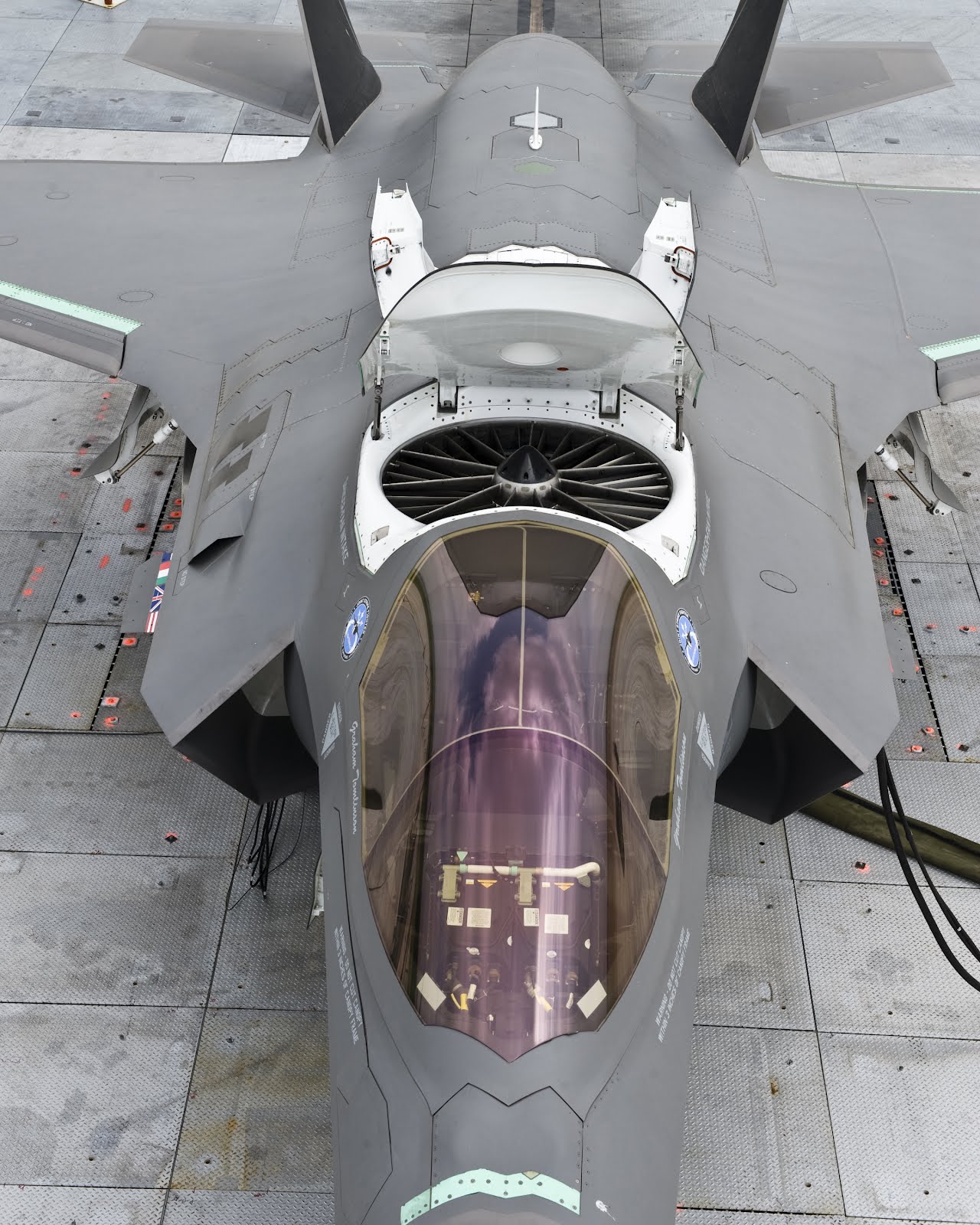Spend even a brief amount of time with members of the J.S.F. program and you’ll hear the basic sales pitch over and over again: The F-35 is a fifth-generation fighter-bomber. It is a quantum leap over legacy aircraft that are nearing the end of their natural lives. Fourth-generation planes like the F-16 and F/A-18 cannot easily be upgraded. You can’t change the shape of the plane. You can’t just keep bolting on new pieces of equipment. Fifth-generation characteristics—like stealth, sensor fusion, and increased maneuverability—must be baked into the plane from the start.
Still, when they think about the F-35 simply as an airplane—leaving aside the delays, the defects, the costs, the politics—military pilots tend to like what they see, or at least what they imagine will come. Pilot-speak is typically uninflected, but enthusiasm pokes through. I spent many hours with Berke and Johnston at Eglin and discussed many of the issues that have provoked criticism of the F-35. The pilots invoked the “above my pay grade” response to some questions. On others they offered explanations or pushback.
I asked, What about that comment, from an evaluation, about how lack of aft visibility in the F-35 will “get the pilot gunned [down] every time”?
Johnston: Well, you come back from flying and you get 100,000 questions and they’re like, What do you think of the rearward visibility? I’m not thinking, O.K., this is on the cover of The Washington Post. I’m thinking, like, O.K., yeah, visibility’s more limited than what I’m used to. Uh-huh. Copy. It was designed that way for a reason. But I’m not going to sit there and write this paragraph on it. I’m just going to say the aft visibility is not as good as it was in a [F-16] Viper. And if that pilot was sitting here with you, you’d be like, O.K., I see that you would write something like that. But you’re thinking you’re talking to a bro, and you’re trying to write as quickly as you can because you have a million questions to go.
So the visibility issue isn’t a concern?
Berke: Not even a tiny bit. The convenience factor of looking from a Viper is really nice, and I’ve flown that jet. But if you put it in context—of all the systems on the airplane and how you fly fifth-generation fighters—a minor reduction in visibility in the F-35 does not concern me. I wouldn’t even spend a brain cell on that.
I asked, What about General Bogdan’s remark about the “50 top parts that break more often than we expect them to”?
Johnston: Things are going to happen. There has never been a program with more end users and shareholders than this. You’re asked to develop the most sophisticated go-to-war system ever. Then you’re told you’ve got to make it take off from an aircraft carrier, take off near vertically, then land vertically on a small boat, which I can’t even believe the Marines land on. Oh, and we’ve got international partners that all get a say in this. So I will say I’m not surprised that we have parts that don’t work and things like that.
Critics point to several publicized episodes when the discovery of design or technical problems has grounded the entire fleet. I asked, Are you troubled?
Berke: The idea of grounding a fleet is not something new to aviation. It’s happened in every airplane I’ve ever flown. Many, many, many, many times.
Berke and Johnston aren’t policymakers or engineers. They’re pilots, and they believe in their work. A more disturbing assessment came from perhaps the most improbable source: Christopher Bogdan, the general who heads the Joint Strike Fighter program. A few weeks after I saw him in Norway, we sat down at his office in Crystal City. The plate-glass windows offered views of the Jefferson Memorial and the Washington Monument, and if Bogdan had been wearing a dress uniform with his ribbons and his three stars, the scene would have looked like a cartoon or a cliché. But Bogdan, 52, wore a green flight suit. He too is a pilot, one who has logged 3,200 hours in 35 different military aircraft. When answering questions, he frequently thumped his fist on a conference table.
With dry understatement he took issue with the bedrock concept of the Joint Strike Fighter—that a single airplane could fulfill the different missions of three different services—calling it “a little optimistic.”
He felt that the way the program had been set up with Lockheed at the outset made absolutely no sense. His first target was the concept of Total System Performance Responsibility: “We gave Lockheed very broad things that said the airplane has to be maintainable, the airplane has to be able to operate from airfields, the airplane has to be stealthy, the airplane has to drop weapons—without the level of detail that was necessary. We have found over the 12 years of the program that the contractor has a very different vision of how he interprets the contractual document. We go, ‘Oh no, it needs to do X, Y, and Z, not just Z.’ And they go, ‘Well, you didn’t tell me that. You just told me in general it needed to do something like Z.’”
His second target was the payment structure: “Most of the risk on this program when we signed this contract in early 2001 was on the government squarely. Cost risk. Technical risk. Perfect example: in the development program, we pay Lockheed Martin whatever it costs them to do a particular task. And if they fail at that task, then we pay them to fix it. And they don’t lose anything.” Bogdan explained that, since taking office, he has made burden-shifting a priority. Beginning with more recent batches of F-35s, Lockheed Martin will cover increasingly larger shares of cost overruns as well as a percentage of “known aircraft retrofit requirements”—that is, the cost to fix flaws discovered on planes that have already come off the assembly line.
Bogdan made it clear that he is tired of business as usual. “Sometimes industry is not accustomed to what I call straight talk. It can get cozy sometimes. I’ve seen it happen. I’ve been there,” he said. “I’ve seen senior leaders on both sides of the fence. And I can tell you that when you take over a program that has had problems like this, being cozy is not an advantage.” He continued, “We awarded the original contract in 2001. We’ve been at this for 12-plus years, and we should be a lot further on in the program and in our relationship than where we are in 12 years.”
Strains in that relationship were evident when I asked about various issues dogging the program. Lockheed, for example, describes the problem of the afterburner essentially cooking portions of the F-35’s stealthy skin as “a minor issue that has been resolved.” The company insists that “[t]here is no structural retrofit needed for the F-35. This was an issue with the adhesive used on the edge of the horizontal tails of test aircraft. A new adhesive is being incorporated in current production aircraft.”
General Bogdan, to whom Lockheed reports, told me that supersonic flight (or any prolonged use of the afterburner) “creates a thermal environment on the back tail portion of the airplane where over time that heat kind of starts disbonding the coatings we have. That’s just not good.” If he had his druthers, salvation would not lie with Lockheed Martin. “If I needed a 911 number or a pick-up-and-call-a-friend, it will be a company like DuPont who builds chemical sealants and those kinds of things.” Continuing on, he said, “Our desire is that we will fix this problem. But that’ll cost us money because we have to cut in the new fix to the production line, and all the airplanes out there have to be retrofit. So there’s a cost there, and we bear that cost. Remember how I told you we took too much risk on this program? Well, there’s some of it.”
When it came to questions about the helmet-mounted display, Bogdan said he was unaware of any instance in which pilots reported spatial disorientation. That said, he conceded that problems with the helmet were real and ongoing, though design solutions had been found for most of them: “But we haven’t put them all together yet in the helmet. Now I’ve got to put it in the helmet and produce the helmet so that I can build 3,000 helmets that all work. Instead of just one helmet that’s been handcrafted with solutions.” Bogdan’s gone one step further, sourcing an alternative helmet from aerospace giant BAE in case the current RCESA helmet is beyond redemption. “Lockheed Martin would very, very much like to influence my decision-making here in favor of the Rockwell helmet. I’m not letting them do that,” he explained. As if to punctuate that he remains open to another solution, Bogdan told me that the BAE helmet is “$100,000 to $150,000 less.”
As for the prohibition against flying the F-35 in inclement weather, Bogdan explained that the OBIGG system “wasn’t up to snuff when it came to protecting for lightning, because it couldn’t keep up with diving and climbing and keeping enough nitrogen in the fuel tanks. So we had to beef up the OBIGG system and that is part of the redesign that’s causing us not to be able to fly in lightning right now. Until that OBIGG system gets redesigned for that purpose and becomes more robust, I guess, we don’t fly in lightning. Now we’re going to have that fixed by 2015.” The bottom line amounted to: this is a fixable problem, it shouldn’t have happened in the first place, and in normal circumstances it would have been fixed during testing, so it’s too bad that airplanes are already rolling off the assembly line and will all have to go back for repair. That’s what concurrency does. “It makes the program very complicated. It adds cost. I hate to armchair-quarterback. And today I may be making decisions that another three-star seven years from now may look back and say, ‘What the hell was Bogdan thinking?’ It’s frustrating. But I just have to play the cards I’m dealt.”
He was philosophical about his situation, wishing he could change a lot of the Joint Strike Fighter’s history and knowing he could not. “I look in the rearview mirror to understand where we’ve been, so I don’t make those same kinds of errors. But if I look in the rearview mirror too much, one, I don’t keep my eye on the road in front of us, and two, it would drive me nuts, and I wouldn’t be in this job very long.”

























